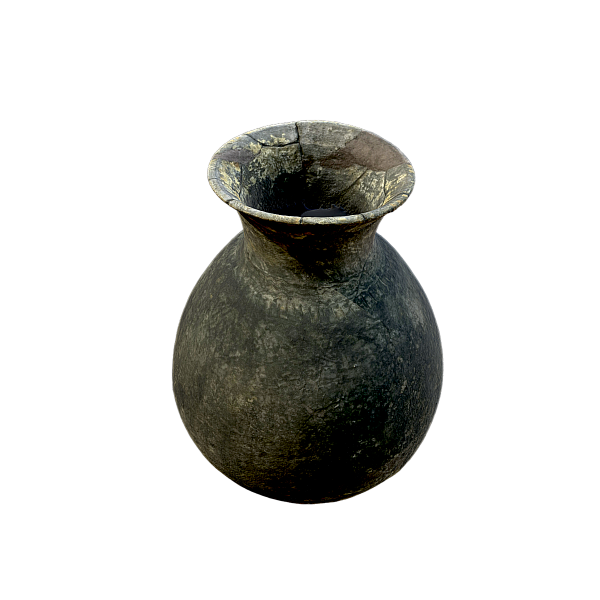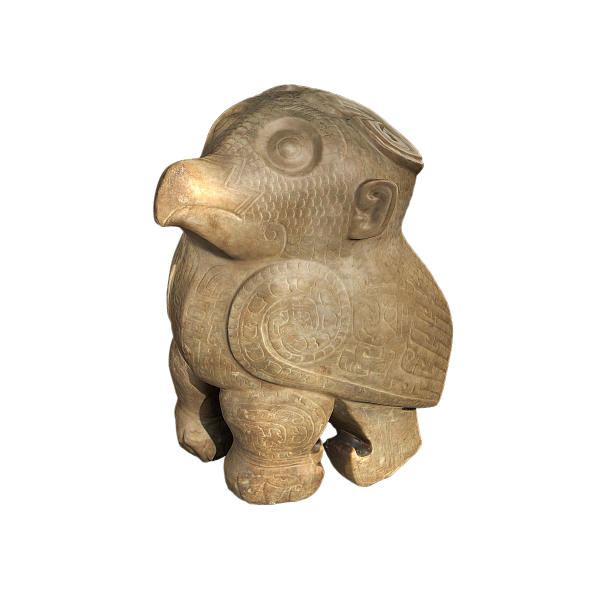Jian Basin with Coiled Chi-Dragon Pattern
| Accession No. | R020022 |
|---|---|
| Period | Eastern Chou |
| Material | Bronze |
| Findspot | Tomb No. 60 Liu-li-ko Site |
| Geographic Location | Chengguan Town, Hui County, Henan Province, China |
| Dimension | H. 37 cm; Diam. of rim 79.2 cm; Diam. of foot 37 cm |
Description
The jian basin with coiled chi-dragon pattern was discovered as a pair with R18525 from Tomb 60, Liulige, Hui County, Henan Province. This pair of jians were selected as national treasures, as they are representative of the large bronze basins of the Spring and Autumn period. Bronze vessels of the jian type first appeared during the Spring and Autumn period. Alongside their use in rituals, these basins were employed for other purposes, such as a washbasin for grooming, a container for ice cubes, and as a means of holding water so as to create a reflection for use as a mirror (before bronze mirrors were invented). Typically, the jians that were used to hold ice cubes and cool down food are square in shape. However, this bronze vessel has apparent water marks on the inside, indicating it was used to hold liquid. The accompanying vessels pan, he, lei, pen and zhou which are all used for grooming purposes, suggest this jian was likely a washbasin. The jian has a slight concave groove before the flat everted rim, and the body is formed with a straighter upper wall and curved lower wall, which finishes with a deep belly and a flat base. There are four animal-head handles with movable rings positioned on each side of the vessel walls, the rings are decorated with coiled chi-dragon patterns. A band of geometric patterns is present on the neck, while three decorative bands encircle the belly. The whole object was manufactured by the piece-mold casting technique.


